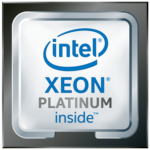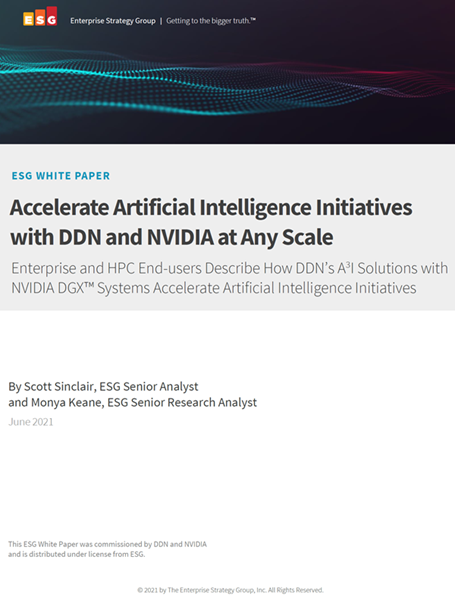Intel has a long history of making important announcements at the annual Supercomputer shows, and this year was no exception. This guest post from Intel covers what new technology was front and center from Intel at SC18, including its Cascade Lake advanced performance processors, Intel Optane Persistent Memory and more. Learn more about these new technologies designed to accelerate the convergence of high-performance computing and AI.
Video: How Ai is helping Scientists with the Large Hadron Collider
In this video from SC18 in Dallas, Dr. Sofia Vallecorsa from CERN OpenLab describes how Ai is being used in design of experiments for the Large Hadron Collider. “An award-winning effort at CERN has demonstrated potential to significantly change how the physics based modeling and simulation communities view machine learning. The CERN team demonstrated that AI-based models have the potential to act as orders-of-magnitude-faster replacements for computationally expensive tasks in simulation, while maintaining a remarkable level of accuracy.”
Intel Offers Sneak Peek at Cascade Lake Advanced Performance edition for HPC
In this video from SC18 in Dallas, Thor Sewell from Intel describes the company’s pending Cascade Lake Advanced Performance chip. “This next-gen platform doubles the cores per socket from an Intel system by joining a number of Cascade Lake Xeon dies together on a single package with the blue team’s Ultra Path Interconnect, or UPI. Intel will allow Cascade Lake-AP servers to employ up to two-socket (2S) topologies, for as many as 96 cores per server.”
Video: Intel Driving HPC on the Road to Exascale
In this video from SC18, Raj Hazra describes how Intel is driving the convergence of HPC and Ai. “To meet the new computational challenges presented by this AI and HPC convergence, HPC is expanding beyond its traditional role of modeling and simulation to encompass visualization, analytics, and machine learning. Intel scientists and engineers will be available to discuss how to implement AI capabilities into your current HPC environments and demo how new, more powerful HPC platforms can be applied to meet your computational needs now and in the future.”
How Intel is Fostering HPC in the Cloud
“Cloud computing offers a potential solution by allowing people to create and access computing resources on demand. Yet meeting the complex software demands of an HPC application can be quite challenging in a cloud environment. In addition, running HPC workloads on virtualized infrastructure may result in unacceptable performance penalties for some workloads. Because of these issues, relatively few organizations have run production HPC work- loads in either private or public clouds.”
Intel Continues HPC Leadership at SC18
In this video from SC18 in Dallas, Trish Damkroger describes how Intel is pushing the limits of HPC and Machine Learning with a full suite of Hardware, Software, and Cloud technologies. ”
Today’s high performance computers are unleashing discovery and insights at an unprecedented pace. The intersection of artificial intelligence and HPC has the potential to transform industries from life sciences to manufacturing, while solving some of the toughest challenges in our world. At SC18, HPC users got to experience how Intel’s holistic portfolio of products is transforming HPC from traditional modeling and simulation to visualization, analytics, and artificial intelligence.”
How Intel is Driving the Convergence of HPC & Ai
“The emerging AI community on HPC infrastructure is critical to achieving the vision of AI,” said Pradeep Dubey, Intel Fellow. “Machines that don’t just crunch numbers, but help us make better and more informed complex decisions. Scalability is the key to AI-HPC so scientists can address the big compute, big data challenges facing them and to make sense from the wealth of measured and modeled or simulated data that is now available to them.”
Intel Powers SuperMUC-NG Supercomputer at LRZ in Germany
In this video from SC18 in Dallas, Dieter Kranzlmueller from LRZ in Germany describes how Intel powers the SuperMUC-NG supercomputer. “The 19.4 Petaflop machine ranks number 8 among the fastest supercomputers in the world. SuperMUC-NG is in its start-up phase, and will be ready for full production runs in 2019. The machine, build in partnership with Lenovo and Intel, has a theoretical peak of 26.9 petaflops, and is comprised of 6,400 compute nodes based on Intel Xeon Scalable processors.”
Video: Intel to Power Fastest Supercomputer in Academia at TACC
In this video, Dan Stanzione from TACC describes how Intel technologies from Intel will power the World’s Fastest Supercomputer in Academia at the Texas Advanced Computing Center. “If completed today, Frontera would be the fifth most powerful system in the world, the third fastest in the U.S. and the largest at any university. For comparison, Frontera will be about twice as powerful as Stampede2.”
Slidecast: BigDL Open Source Machine Learning Framework for Apache Spark
In this video, Beenish Zia from Intel presents: BigDL Open Source Machine Learning Framework for Apache Spark. “BigDL is a distributed deep learning library for Apache Spark*. Using BigDL, you can write deep learning applications as Scala or Python* programs and take advantage of the power of scalable Spark clusters. This article introduces BigDL, shows you how to build the library on a variety of platforms, and provides examples of BigDL in action.”













